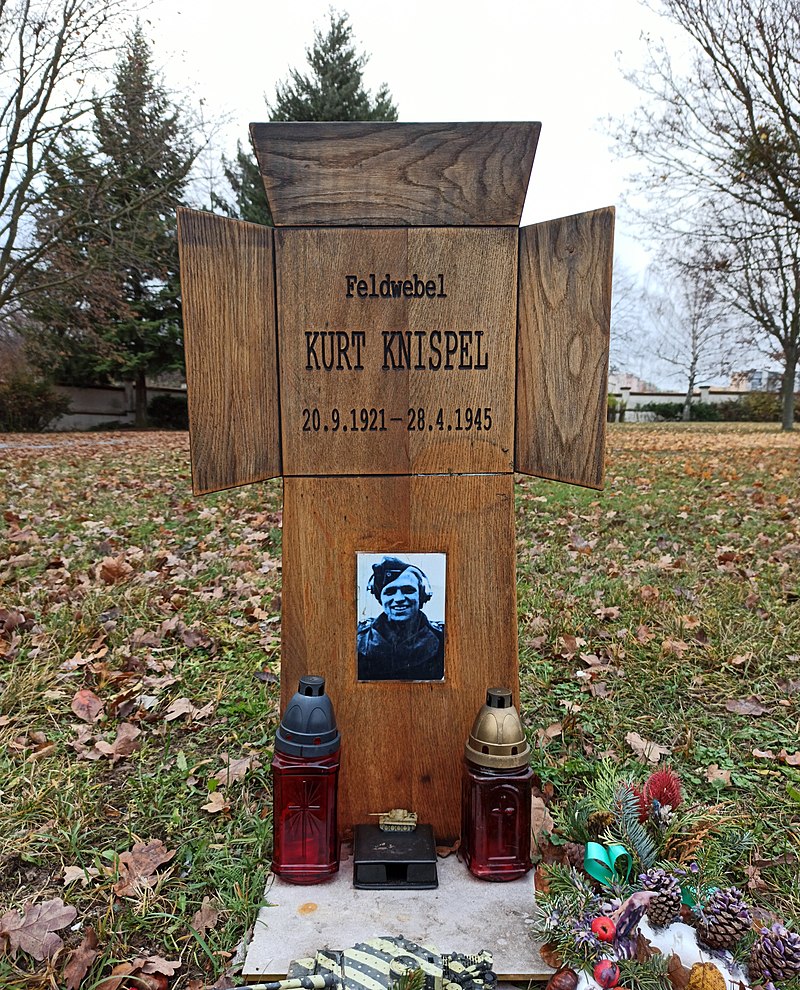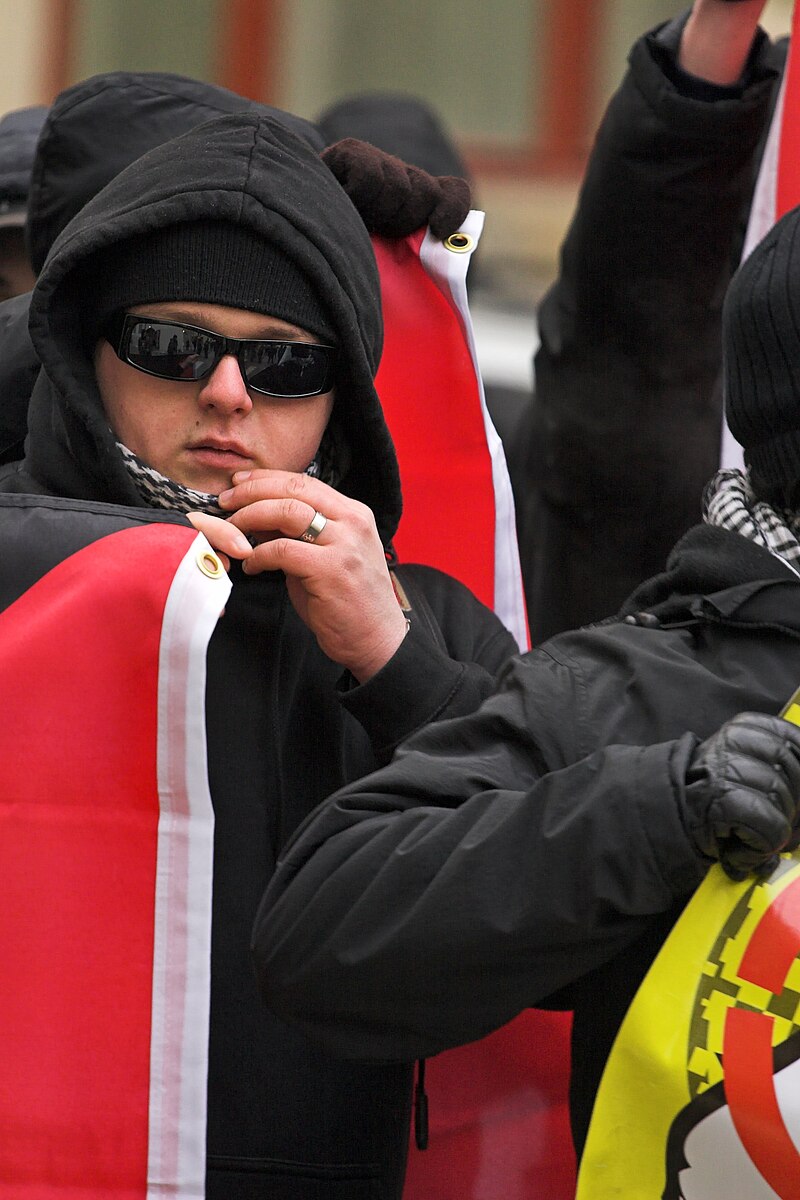September 20, 2025: Armed neo-Nazis attack peaceful rally in Frýdek-Místek
On the night of Friday, September 20, 2025, a group of armed neo-Nazis attacked a peaceful anti-racism demonstration in Frýdek-Místek. The assault left several people injured and once again revealed the passivity of the police when facing far-right violence in the Czech Republic.
An attack that does not surprise
What happened on Czech streets that Friday night showed how openly neo-Nazis in the Czech Republic act with impunity. A group of hooded youths, armed with telescopic batons, tactical gloves and other weapons, violently stormed demonstrators who were simply exercising their right to protest. According to Romea.cz, which covered the attack, there was no provocation or confrontation beforehand: it was a planned, frontal assault fueled by hate.
The scene was familiar to anyone who knows Central Europe’s recent history: an organized far-right group acting with impunity in the streets, while police seemed more concerned with controlling the victims than detaining the aggressors.
The price of violence
Among the injured, the most serious case was a young protester left with a shattered face: fractures to the cheekbone, jaw, nose and eye socket. The brutality of the attack disfigured him and nearly cost him an eye. “If the blow had landed just a few centimeters higher, I would be blind or dead today,” he later said. His testimony is proof that this was not a simple disturbance, but an attempted political lynching with devastating physical consequences.
Police between passivity and suspicion
What was most alarming was not just the unleashed violence, but the institutional response. Police present at the scene acted with passivity bordering on complicity. There were blows, screams and blood, yet arrests were few and late. Instead of protecting peaceful demonstrators, officers put more effort into dispersing the rally than confronting the attackers.
This is not an isolated episode: in the Czech Republic, police have repeatedly been criticized for double standards. Toughness is reserved for those protesting for civil rights, while neo-Nazi groups are met with unusual leniency. The signal is dangerous: far-right violence is perceived as tolerable, even when it directly threatens democratic coexistence.
Neo-Nazis in the Czech Republic: an entire ecosystem
The attack was neither random nor the work of confused teenagers. Neo-Nazis in the Czech Republic operate as part of an ecosystem that feeds hatred and normalizes violence. Sixteen-year-olds do not reach that level of brutality on their own. They have clearly been indoctrinated, instructed and trained in environments where racism and admiration for fascism are cultivated from an early age.
A look at their social media shows a repeated pattern—as we already pointed out in The Hidden Price of Racism in the Czech Republic: photos of weapons, military-style training disguised as “hunting” or “hobbies,” constant references to abstract enemies—antifascists, minorities, migrants—and devotion to Nazi symbols that in Germany would mean prison.
Mentors of hate: weapons, training and indoctrination
At least three documented cases with verifiable material on social media show the existence of real “mentors” guiding extremist youth. These are not mere sympathizers: they are people with military or paramilitary backgrounds, skilled with weapons, who present themselves as instructors, hunters or guardians of national traditions.
Behind the facade of innocent hobbies—hunting, survival, shooting sports—there is systematic indoctrination. From childhood or adolescence they are taught to handle weapons; target practice is accompanied by speeches about imaginary enemies; social media is filled with rifles, pistols and tactical gear displayed as trophies; and Nazi or pagan symbols are reinterpreted as emblems of resistance.
Posts on platforms like Facebook, Instagram or YouTube are accessible to anyone. These are not hidden forums: they are public showcases. And yet, instead of generating institutional reaction, they seem to enjoy tolerance and impunity.
Background: neo-Nazis in the Armed Forces
The risk of extremists receiving military training is not new. In 2007, the daily Mladá Fronta Dnes revealed that several active soldiers were linked to the hardcore neo-Nazi group Národní odpor. Among them was an artilleryman and two members of the rapid response brigade, trained in sabotage, counterinsurgency and close combat. Despite police and military intelligence being aware, these men remained in service for years. This precedent shows that the connection between neo-Nazis and military circles has long roots, helping explain why today ex-military “mentors” can instruct youth in political violence.
Normalizing fascism as a hobby
Profiles are full of photos of pistols laid out on tables, rifles with scopes, bulletproof vests and children smiling while learning to aim. All wrapped in slogans about “healthy pastimes” or “national traditions.” The context reveals the truth: this supposed hobby is mixed with open references to the Third Reich, reverence for Nazi soldiers, and symbols banned across much of Europe.
In Germany, displaying such emblems or denying the Holocaust brings prosecution and prison. In the Czech Republic, however, the line between “freedom of expression” and glorifying Nazism blurs, and perpetrators act without fear of consequences.
From private training to the streets
When teenagers attack peaceful demonstrators with such euphoria and violence, it is no outburst. It is the result of years of preparation in an environment where firing a weapon or beating an “enemy” is celebrated. Even assuming they were recruited just two years ago, it means that by age 14 they were already under the influence of adults with firmly racist and fascist ideas.
This mix of early indoctrination and paramilitary training turns them into soldiers of a dangerous cause. The fact that they flaunt it openly on public networks should be an alarm signal for any authority responsible for public safety.

Graves, false heroes and symbols of death
The cult does not stop with the present. Across the country, graves of Nazi soldiers have become places of pilgrimage and reverence. Young people kneel at the tombstones of Reich soldiers, post photos online and add messages of pride. The glorification of death and the fascist past coexists with a narrative that paints antifascism as the real enemy.
This historical revisionism—whitewashing Hitler’s soldiers while demonizing those who fought against him—is not an academic error. It is part of the strategy to normalize Nazi ideology among new generations.
A public phenomenon, not a clandestine one
The greatest paradox is that none of this happens in the shadows. Photos, names and symbols circulate openly online. No undercover work is needed: a simple search suffices. And yet authorities behave as if they do not see it, as if these were just harmless hobbies of eccentric citizens.
What actually spreads is a dangerous web: uncontrolled weapons, training of minors, exaltation of Nazi symbols and street violence aimed at peaceful demonstrators.
The risk of impunity
As long as this ecosystem is tolerated, every attack like the one in Frýdek-Místek will be just another link in a chain of impunity. The signs are clear: neo-Nazis in the Czech Republic not only exist, they are expanding, recruiting and training in plain sight. And every time the police look the other way, democracy erodes further.
Visible and expanding neo-Nazism
Neo-Nazism in the Czech Republic is not a relic of the past but a reality thriving in the 21st century. It exploits tolerance on social networks and the lack of institutional response to expand unchecked. What was once confined to small circles now appears openly: symbols, hate messages and youth training circulate normally. This visibility not only reflects impunity but also the absence of effective policies to contain a phenomenon growing before everyone’s eyes, despite warnings from international organizations such as OSCE/ODIHR about the sustained rise in hate crimes in Europe.
We can no longer speak of exceptions or isolated incidents. Neo-Nazi violence is today an organized, public and expanding problem. Ignoring it means allowing it to advance.
